When we visited Panama’s Bocas del Toro Region, we knew right away that we didn’t want to just stick to the popular islands, but wanted to explore parts of the little-visited mainland as well.
A guided tour of the San San Pond Sak Wetlands seemed like the perfect activity to get off Bocas’ Tourist Trail, plus it gave us a chance to spot elusive Antillean Manatees, which we had never seen in the wild before. Here’s everything you need to know about visiting the Humedal San San Pond Sak.
This post may contain affiliate links, and I might earn a small commission at no additional cost to you. For more info, click here.
A Description of the Boat Tour
The motorboat tours into the wetland reserve are organized by AAMVECONA, the environmental organization taking care of the Humedal. It’s definitely useful if you speak some Spanish, as our captain’s English was limited, but I wouldn’t say it’s essential to enjoy the tour.

.
Top 3 Places to Stay in Bocas del Toro
Budget Option: Cliff’s Hostel
Midrange: Selina Red Frog (pictured)
Luxury Choice: Eclypse de Mar Acqua Lodge
.
The Ride Along the Rio San San
The motorboat ride begins in a narrow part of the Rio San San, near the AAMVECONA Station by the Changuinola-Guabito Highway. Right away, we were able to spot Jicotea Turtles sunning themselves on rocks in the river, as well as plenty of Muscovy Ducks and other waterfowl.
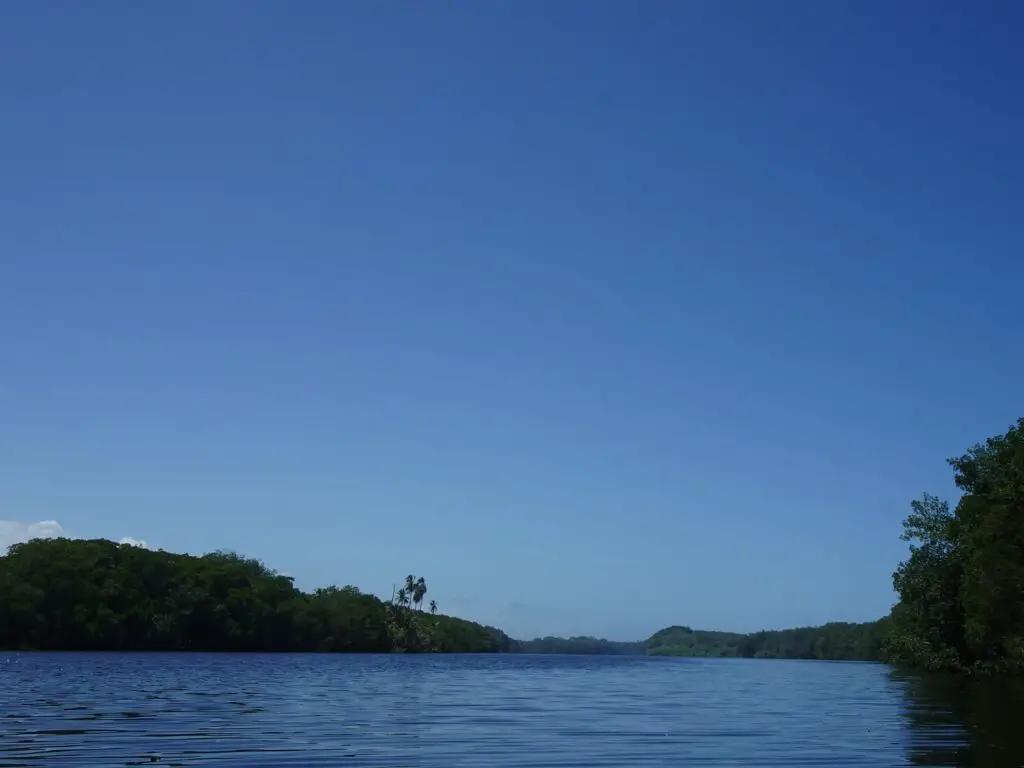
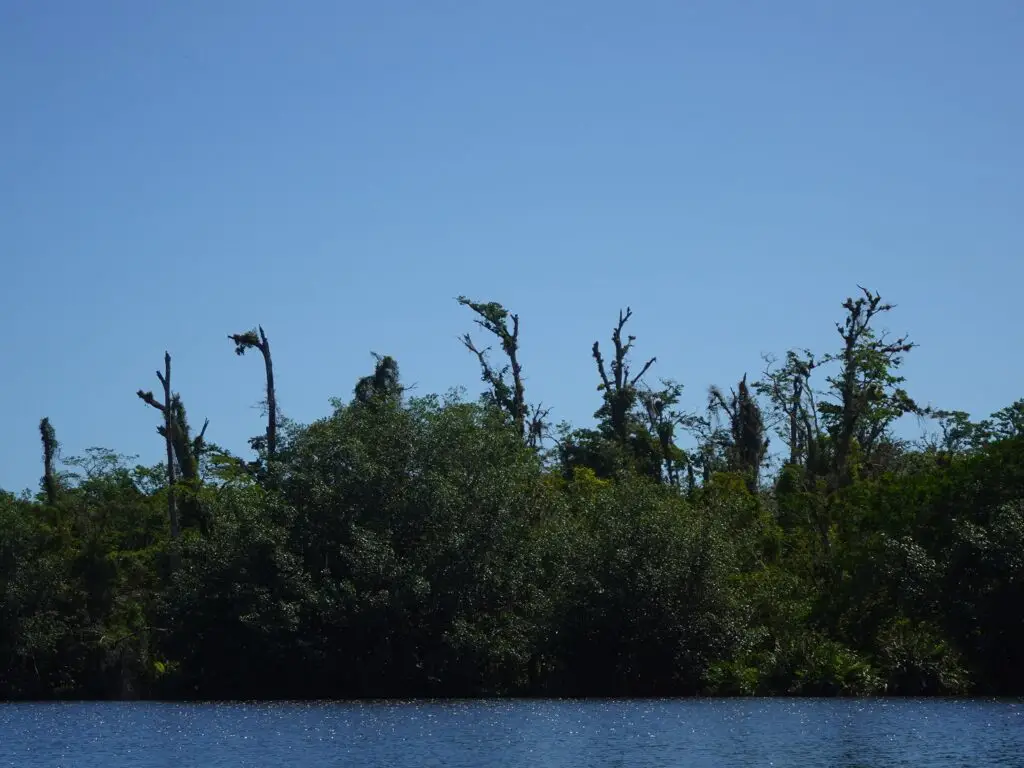
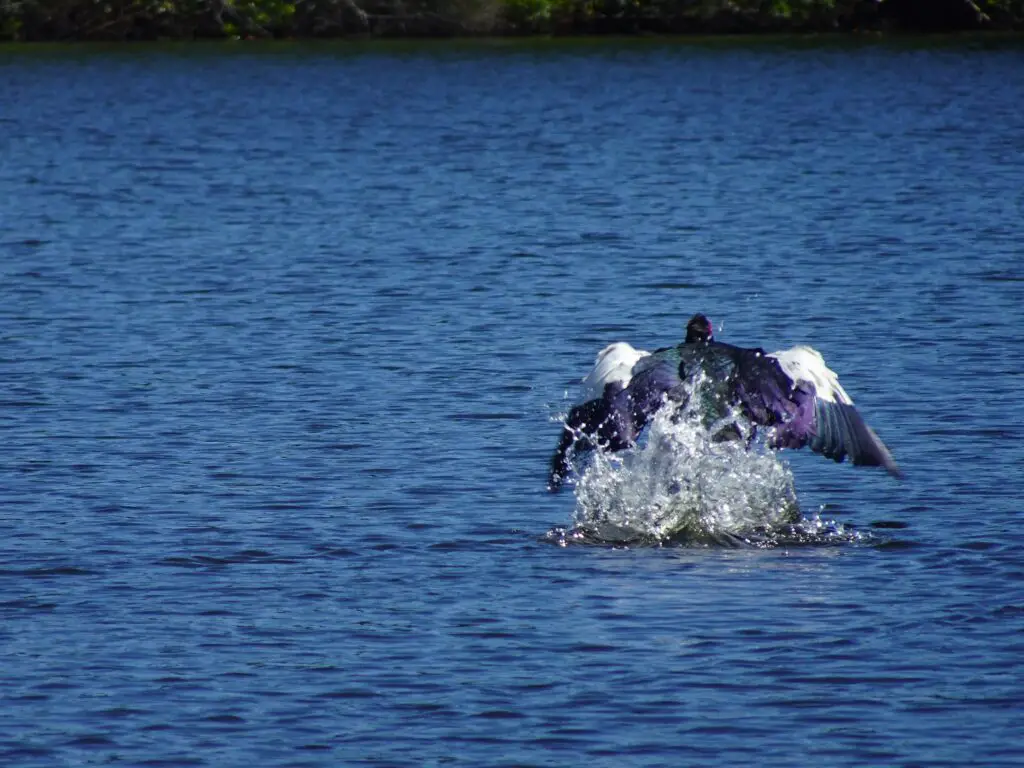
We also saw countless herons wading through the water and Black Vultures circling above. After about half an hour, the Rio San San joins up with the Rio Negro and widens significantly. Shortly afterwards, we turned into the mangroves, where a wooden lookout platform has been constructed.
Manatee Spotting
Here, an AAMVECONA volunteer suspended bunches of palm leaves over the water, while our guide Pedro gave a sound signal, and then we simply waited, until a young, female manatee turned up to nibble the leaves.
The Antillean manatee is a subspecies of the West Indian manatee, which inhabits shallow coastal waters, rivers, and lagoons in the Caribbean. Unfortunately, their conservation status is threatened due to habitat loss, boat collisions and entanglement in fishing gear, which makes Nature Reserves like San San Pond Sak all the more essential.

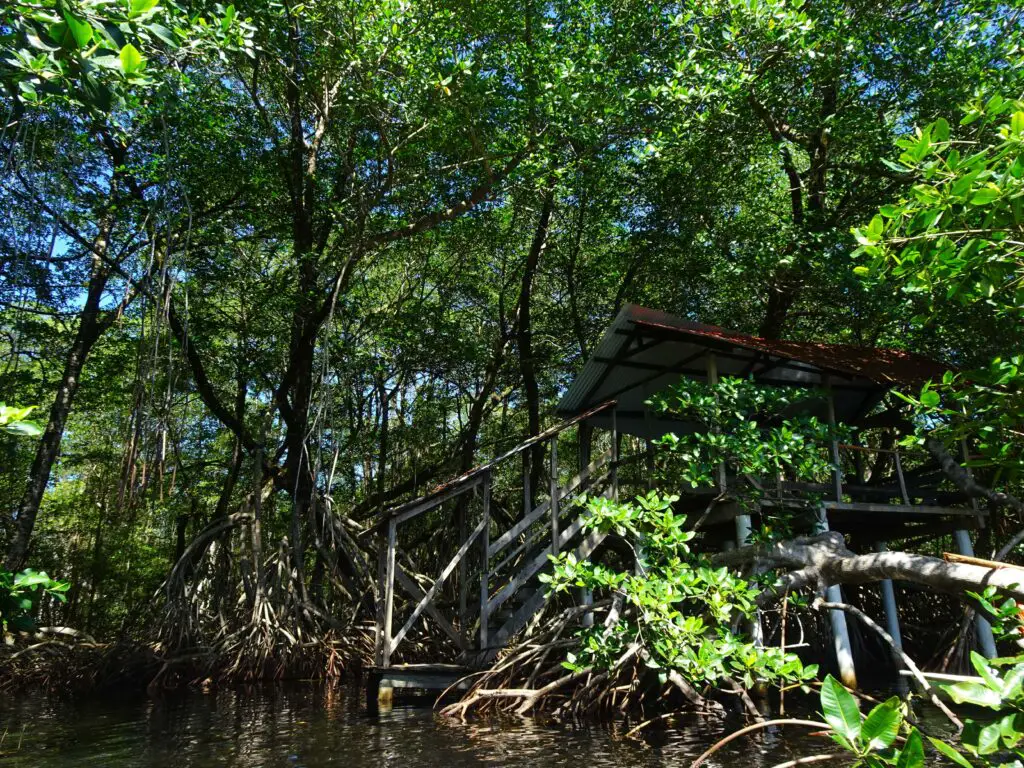
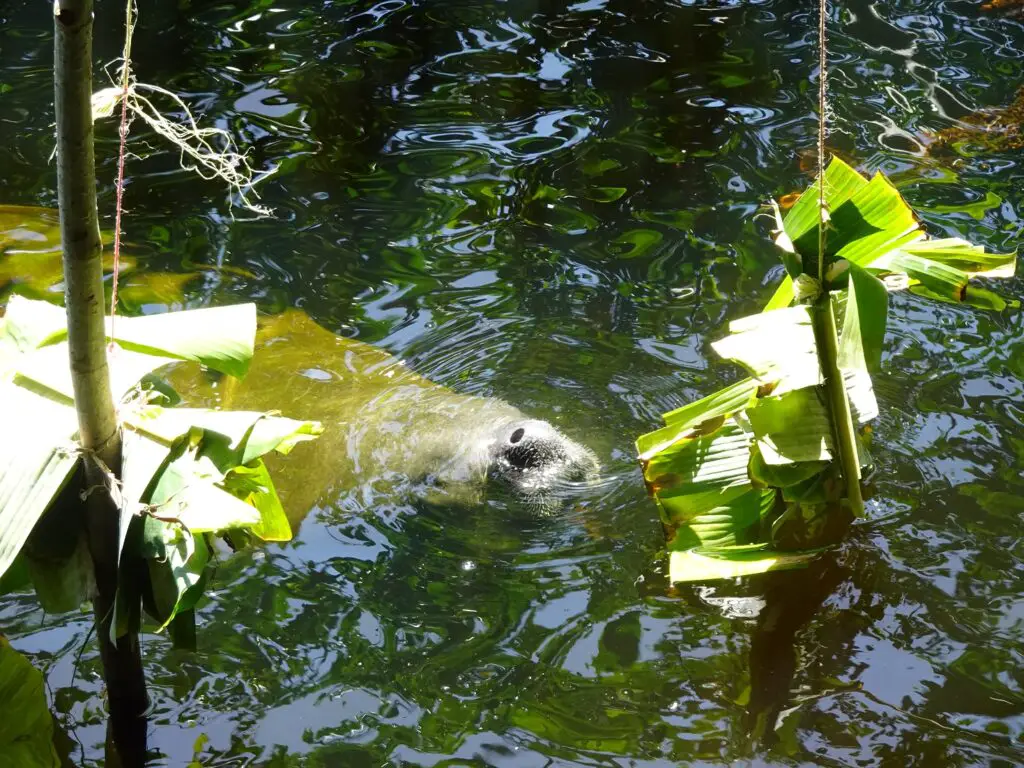
Pedro seemed disappointed that only one of them turned up (he told us that usually more come), but as we had never seen manatees in the wild, we were absolutely thrilled by watching just the one.
We spent quite a while in the shelter, surrounded by the tall, otherworldly mangrove roots, observing the manatee as well as tons of scuttling Mangrove Tree Crabs and some curious Yellow-Headed Geckos.
The Beach at the River Mouth
Afterwards, we got on in the boat again and moved further down the river to its mouth, where we landed at a ranger station by the sea. Here, an elderly caretaker chopped some coconuts for us, and we took a stroll along a long and completely deserted beach, which later in the year is a breeding ground for sea turtles.


We were shown the place where the turtles usually nest and our guides explained a little about the conservation efforts organized by AAMVECONA. Eventually we made our way back to the boat and moved upriver again back to the highway.
San San Pond Sak Map
You can check out the route of the boat tour on this map of the Humedal San San Pond Sak.
Practicalities
How to Get There by Public Transport
The San San Pond Sak Reserve lies a few kilometres west of Changuinola. From the city, you can catch any bus headed for the Costa Rican border, and they’ll drop you off near the AAMVECONA office right by the highway.
To get to Changuinola from Isla Colón, Bocas del Toro’s main tourist hub, you’ll have to first take a ferry to the mainland, then either take a taxi or walk down the main road to Almirante’s bus station and catch the bus to Changuinola from there.
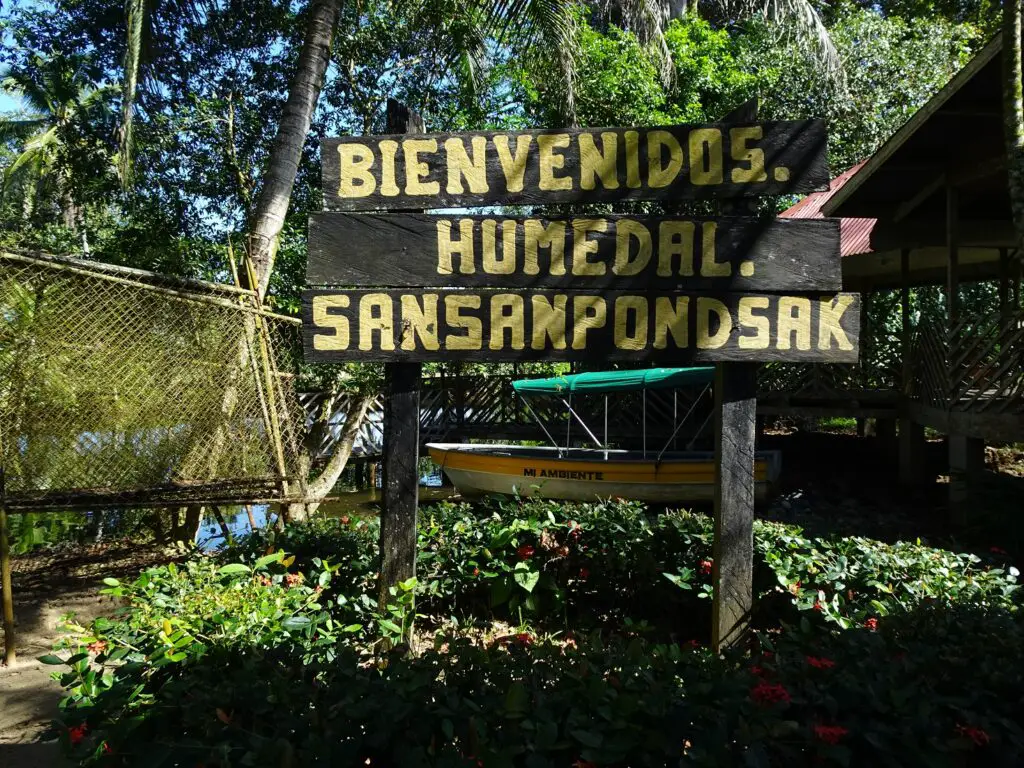
Make sure to wait on the northern side of the road, opposite the bus station, as the Changuinola-bound buses mostly come from further South and won’t pull into the station. The buses should leave every 15 minutes and take about 45 minutes to Changuinola.
If you’re planning on doing the day trip from the islands, you’ll have to factor at least three hours for the whole journey from Bocas Town, even if it’s just 35km as the crow flies. We started in Bocas Town at 6am and made it to the Humedal shortly before our appointment at 9am.
To avoid this, you can also stay in Changuinola, and there’s even some very basic accommodation in the Reserve itself (you can inquire about that with AAMVECONA when booking your tour).
How Much Is the Tour?
We paid 60$ per Person, plus a tip for our captain / guide Pedro.
How Big Are the Tour Groups?
This entirely depends on how many people have booked a tour for that day. Not many travelers make it here, so chances are, you’ll get a private tour. This was the case for us, at least. The small motorboat we used also couldn’t sit more than 6 passengers, but maybe they have bigger ones, too.
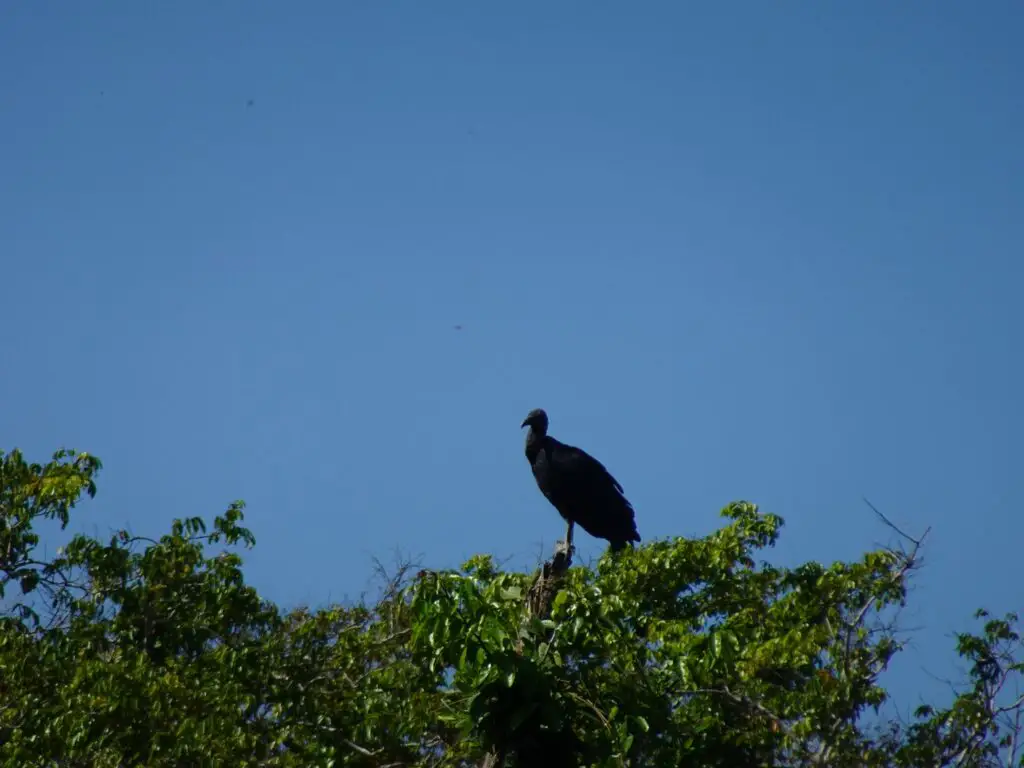
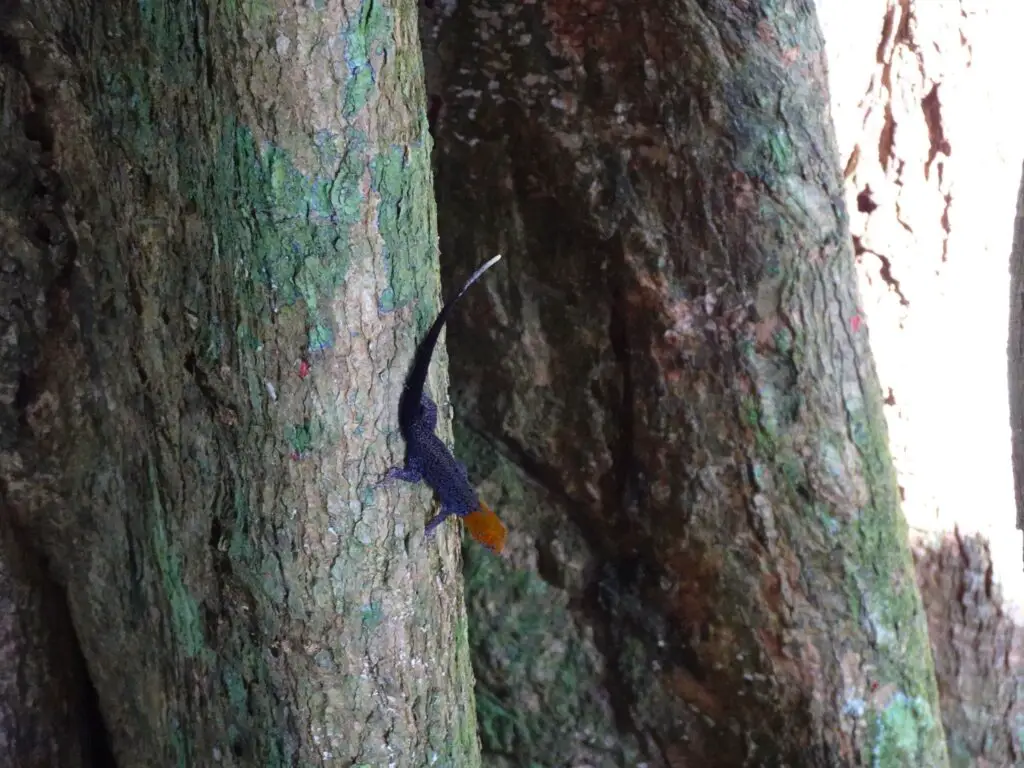
That said, there’s a two-people minimum, but if you’re traveling solo and aren’t on a tight a budget, you could pay double (or find some fellow travelers on the Bocas Archipelago to cut the costs).
How Long Does the Tour Take?
The tours start at 9am and take about 5 hours, but this also depends on how long you have to wait until the manatees show up and how long you want to watch them. For us, it took about 15 minutes until a manatee appeared at the hide.
How to Book the Tour
We simply emailed them at info@aamvecona.com to book our tour, but make sure to not book last-minute, as we only got a reply two days later.
Where to Go Next
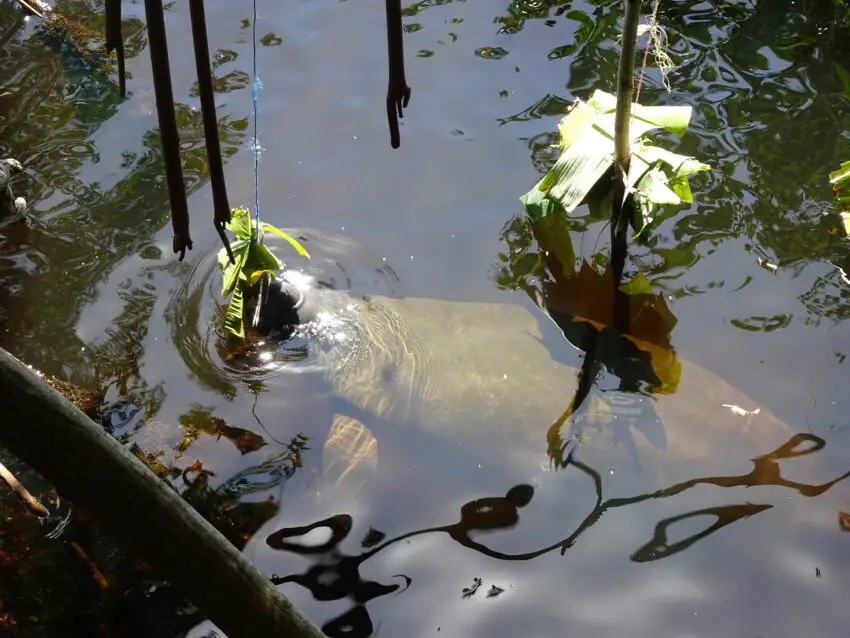

If you don’t want to take the bus, Papito’s Nature Tours takes you to see the manatees at San San Pond Sak entirely by boat through the Schnyder Canal which offers great birding opportunities as well. He’ll pick you up early on Isla Colon, and in the afternoon you can go swimming Starfish Beach if you want.
Hello Dorien,
thanks for the tip! I’ll add it to the post once I get around to it!
Reinhard